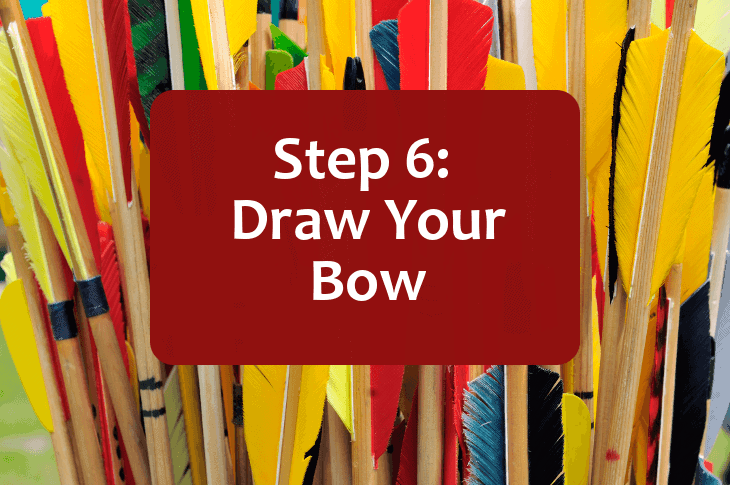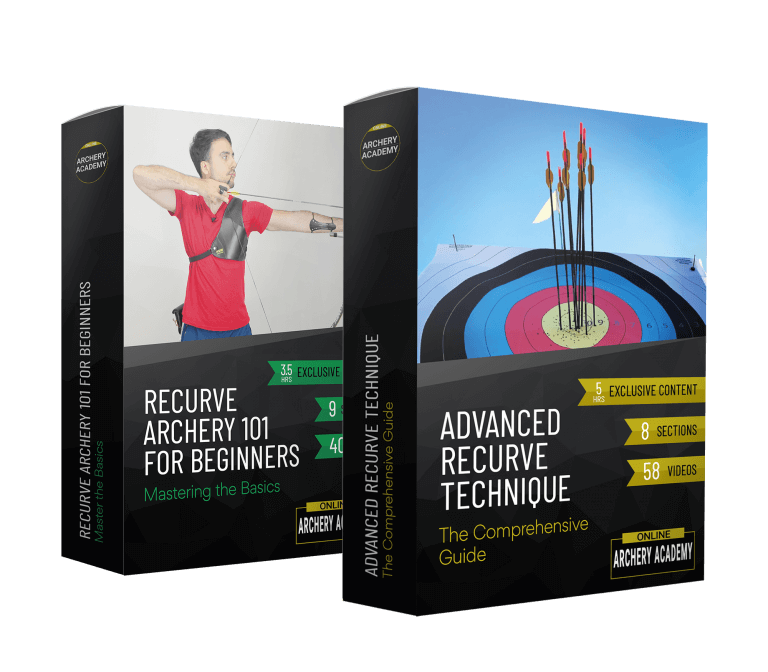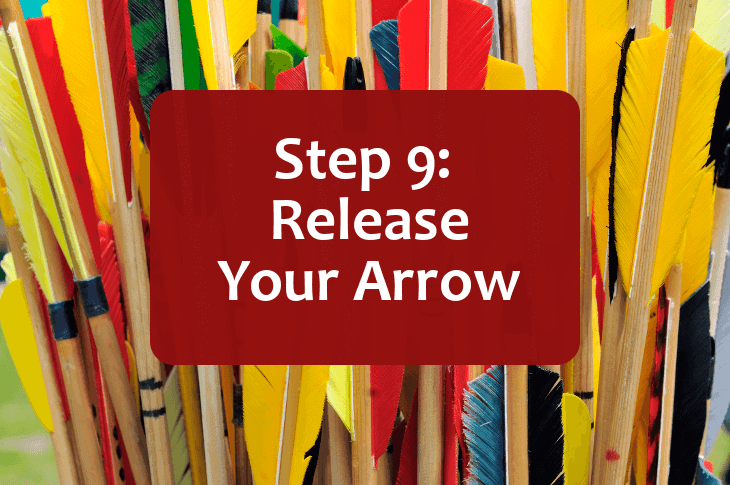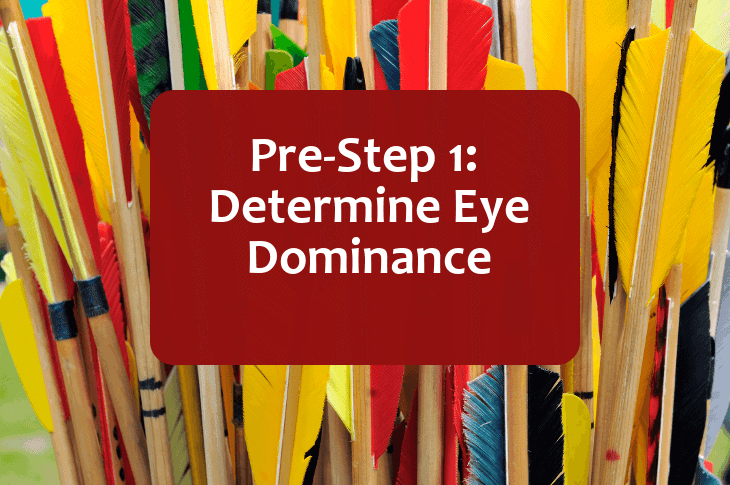When you pull the bow string back, that’s called “the draw.” When you’re pulling the bow string back, you’re “drawing.” It’s Step #6 of shooting an arrow, and it’s one of the most active—and detail-heavy—parts of the shot sequence.
(And, by the way—if you need to see all 10 steps, you can check out my overview here).

The Basic Motion
Just to bring us up to speed, you’ve got your stance correct (Step 1), you’ve nocked the arrow like a pro (Step 2), you’ve grasped the bow string (Step 3), you’ve readied your bow hand (Step 5), and raised your bow arm (Step 6), and now…
The draw. In-and-of-itself, the draw is easy: you bring the bow string backwards, toward the side of your face.
But, of course, the devil is in the details. Here are main things you need to keep in mind during the draw:
- Keep Your Head Up Straight. Archers can sometime have the tendency to bring the head back away from the bow string, or sometimes, to lean into the bowstring. Don’t; look at the target and keep your head straight up and down as you draw the string closer to your face.
- Relax Your Shoulders. Keep them as low as possible. “Relaxed” often means “good form.”
- Use Your Back. A good draw uses your back as well as your arms, so when you’re juuuuuuuuuust about at full draw, try to get all the way to full draw by squeezing both of your shoulder blades together. Do it gently—don’t jerk them together; remember, you’re trying to do this in a fluid motion. Using your back muscles is actually a pretty important topic, and I’ve written some more extensive posts about using your back muscles, so check those out when you’re ready.
- Keep Your Wrist Flat. Don’t “break your wrist,” as they say. You want your wrist on your drawing hand to be as straight as possible, with a straight line all the way from your wrist to your forearm to your elbow when you’re at full draw.
- Keep the String Centered. As you draw, keep the bow string lined up with the center of the bow. Make sure you’re not pulling left or pulling right.
- Take Stock at Full Draw. At the time of full draw, your chest should be facing perpendicular to the target, and your index finger will be near the corner of your mouth (this last bit—bringing your index finger to the corner of your mouth—is called “finding your anchor point,” and we’ll discuss it more in the next step). Your elbow on your draw arm should be directly behind the arrow; if it’s sticking up in the air, try to bring it down a little bit, so that it is roughly parallel to the arrow.
- Keep it Smooth. Try to make the draw one continuous motion: a smooth pull-back from the at-rest position of the bow to full draw.
Sounds like a lot, right? It is! People train for years to get it right.
But here’s the good news: you don’t have to get all that right when you’re first starting out. You can still do very well in archery while you’re working on all these things, so don’t think, “This is so complicated—I don’t think I could ever do all that.” Chances are, you’ll do a few of these things naturally, and you can learn the rest of the details one at a time. You’ll see some incredible improvement as you incorporate each detail into your draw.
Remember Your Grip
We talked about this in a previous step, but I’ll bring us back for a moment: make sure to maintain a relaxed grip during your draw. Many people have a perfect grip during the pre-draw stages, and then initiate Death Grip when they draw. Try to avoid that. You want to how the bow with enough force so that it doesn’t sway or wiggle, but you want to be calm and relaxed, so that your grip is juuuuuuust right.
Remember, a Death Grip can result in a serious, serious welt on your inner bow arm (not to mention some lousily-shot arrows), so you want to maintain a relaxed grip through the draw.
If You Find Yourself Listing Upwards During the Draw…
When drawing, aim at your target and keep your bow pointed at your target throughout your entire draw. If you find that you can’t draw without your bow listing upwards, that means the bow you’re using is too heavy (in other words, the draw weight of the bow is too much for you). That can be very dangerous—especially if you misfire and your bow is pointed upwards. So, if you find that your bow is drifting upwards when you draw, switch to a lower bow weight.
An Important Aspect of the Draw: The Correct Draw Weight
One of the most important parts of the draw—perhaps one of the most important part of your entire sequence—is using a bow with an appropriate draw weight.
Just a quick refresher: draw weight is the amount of force (measured in pounds) that it will take to draw a bow string. So, if you were to nock an arrow and pull back on the bow string of a bow with a draw weight of 20 pounds, it would be a lot easier than nocking an arrow and pulling back the bow string of a bow with a draw weight of 50 pounds.
So why is it important to get the draw weight correct? Because if you choose a bow with a draw weight that’s too low, you’ll overdraw the bow and your arrows won’t be as fast or accurate as they could be, and if you choose a bow with a draw weight that’s too high, you’ll have a very difficult time drawing, develop bad habits, and open yourself up to injury.
Point is, the appropriate draw weight is important. If you’d like to learn more about draw weight, I’ve written a post about it right over here.
Mind Your Bow Arm and Your Bow Arm Elbow
On the draw, some people lock their bow arm, and some do not. Like many aspects of archery, it’s debated, and debated often. If you’re new to archery, though, I’d suggest you lock your bow arm.
And, I’ve mentioned this in the last step, but I’ll repeat it here, because in writing these steps, I’ve discovered I’m a bit of a worry wart, and I want people to remain 100% safe at all times:
If you are double jointed, make sure you are not hyperextending your elbow. If your elbow hyperextends, it can get in the way of the bowstring—that is, when the you release the bow string, it will connect with your inner elbow—and that can be incredibly, incredibly painful.
Compound Bow Users: Welcome to the Valley
Compound bows are FASCINATING. They’re a marvel of physics, and Holless Wilbur Allen, Jr., the man who created them, was a genius. That said, they’re a little complicated, which is why it may be best for new archers to start out on recurve bows.
I mention compound bows because the draw for a person using a compound bow feels a little different that it does for a person using a recurve bow.
A compound bow uses a complicated levering system of pulleys and cables that increases (“compounds”) the draw weight of the bow. Part of the magic of that system is that when you are at full draw, it will feel easier to hold the bow string back, and that feeling is called “the valley.” It’s a dip in the draw weight when you’re at full draw on a compound bow. The valley makes compounds bows great for hunting, because you can aim for a longer period of time without experiencing the full draw weight of the bow.
That said, if you’re using a compound bow and you’re at full draw and you let forward on the bow string even a little bit, it will feel like the bow string is getting a LOT heavier. You must be aware of this, because it’s not uncommon for people to forget that the draw weight will feel a lot heavier, and they let up on the bow string a little—and then they lose control of the bow string as it gets heavier and snaps back to its un-drawn position. Obviously, that’s a bad thing. (Recurve bows don’t have that feature, but the way—their draw weight will feel that same at full draw.)
The lesson here is to be careful if you’re using a compound bow—if you’re at full draw and you need to return the bow careful and slowly to its undraw form, you’ll experience a *sharp* increase in draw weight as you do so. Be cognizant of that feeling, so you don’t lose control of the bow string and misfire (if you’ve got an arrow nocked) or dry fire (if you don’t have an arrow nocked).
Congratulations! You’re Almost There
Well done! This is one of the most difficult parts of the shooting sequence, and if you’ve made it this far down, you’ve probably picked a few things up.
If you’re ready, Step #7 is next.




